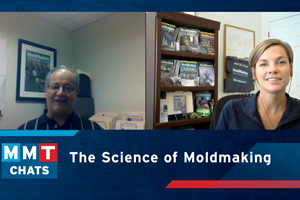Tracking Tools in the Cloud
Whether for a local mold shop or a globally renowned supplier, a centralized system for reviewing and analyzing data is key.
System integration is essential for reviewing data and analytics, centralizing communication channels, maintaining collaborative operations and tracking all affiliated information. The more complex a company’s operations are, the more valuable the analytics. Whether it’s a local mold shop or a globally renowned supplier, the need for a centralized system is proving more beneficial to all of the parties involved. Instead of managing information in multiple systems, users should opt for an all-inclusive system to manage information internally and throughout the supply chain, enabling improved collaboration. A decentralized system can negatively influence the success of the work, cost money, increase the likelihood of error or management oversight, and simply complicate the process.
Many manufacturers already rely on data tracking to review order status, cycle-time performance and product quality, but some now are also digitizing their strategies, and producing faster and more accurately while lowering costs and reducing lost time. Location tracking of molds via the cloud is a key component to a centralized system, and using an all-inclusive tool management documentation platform will help provide the necessary tools to do this. This platform should not only store and share files, but also provide real-time updates, issue reporting, custom alert notifications and GPS location tracking from one centralized system. An app option will also allow a shop’s customers to access their information via the cloud and guarantees that the pertinent tooling data remains with the mold no matter where it travels.
QR and bar codes are becoming more commonly used to track tools and assets. Merging such technology with the cloud streamlines communication among multiple positions within a company, makes file sharing more transparent and readily available, and shortens the approval process. Additionally, when a mold shop receives an OEM request for information on a mold that was completed years prior and that is no longer in the shop, that cloud-based system can provide speedy, convenient access to that information.
For example, when a mold shop sends out large files, they typically must go through a data manager, then to another department that handles file transfers and formatting, and finally to a separate team for distribution. The right tool management documentation platform simplifies this process. It cuts the number of people in the process and does not require an individual to wait on someone else in order to access information. It allows the mold shop to communicate directly to all of its customers from one system. This digital process also reduces the amount of paperwork involved and keeps the supply chain aware of the current program’s status, which helps avoid unexpected delays. With the right tool management documentation platform, a moldmaker can upload a mold design to a cloud database, where it can be viewed instantaneously and signed off on by the customer.
The cloud can be readily accessed through smartphones, desktop computers and any other Wi-Fi-accessible technology, and mobile apps are safer and more secure than ever. Simply logging onto a website or using an app can transform an entire operation. It can improve the flow of information and data, increasing efficiency. Also, by tracking tools and managing data, a company can better preserve its inventory, reducing maintenance costs and the risk of lost information across the supply chain.
Tracking tools in the cloud can entice all roles in a company to be involved in the production process. Mold builders no longer need to make large investments in enterprise resource planning or onsite systems and hardware. The cloud enables shops to improve collaboration, boost workflow and increase automation.
Related Content
MoldMaking Technology's Most-Viewed Content 2022: Products
MMT shares the five top-viewed technologies, equipment and services of 2022 in each Engineer, Build, Maintain and Manage tenet based on Google Analytics.
Read MoreSimulation is a Process, Not Just Software
To reap the benefits of simulation, you must view it as a process requiring you to change the way you work in part and mold design.
Read MoreProducts and Services for Multiple Moldmaking Needs
New year, new technology roundup! Featured here is a collection of product offerings, from profile milling cutters to industry-specific CAD/CAM software to innovative hot work tool steels.
Read MoreMMT Chats: The Science of Moldmaking, Part 1
MoldMaking Technology Editorial Director Christina Fuges chats with Don Smith, North American Senior Tooling Engineer for Scholle IPN in Northlake, Illinois about the future and science of moldmaking.
Read MoreRead Next
The Data-Driven Operation
Manufacturing is a team effort involving suppliers, tool shops and customers throughout the world collaborating and sharing project data.
Read MoreReasons to Use Fiber Lasers for Mold Cleaning
Fiber lasers offer a simplicity, speed, control and portability, minimizing mold cleaning risks.
Read MoreAre You a Moldmaker Considering 3D Printing? Consider the 3D Printing Workshop at NPE2024
Presentations will cover 3D printing for mold tooling, material innovation, product development, bridge production and full-scale, high-volume additive manufacturing.
Read More







.jpg;maxWidth=300;quality=90)

















